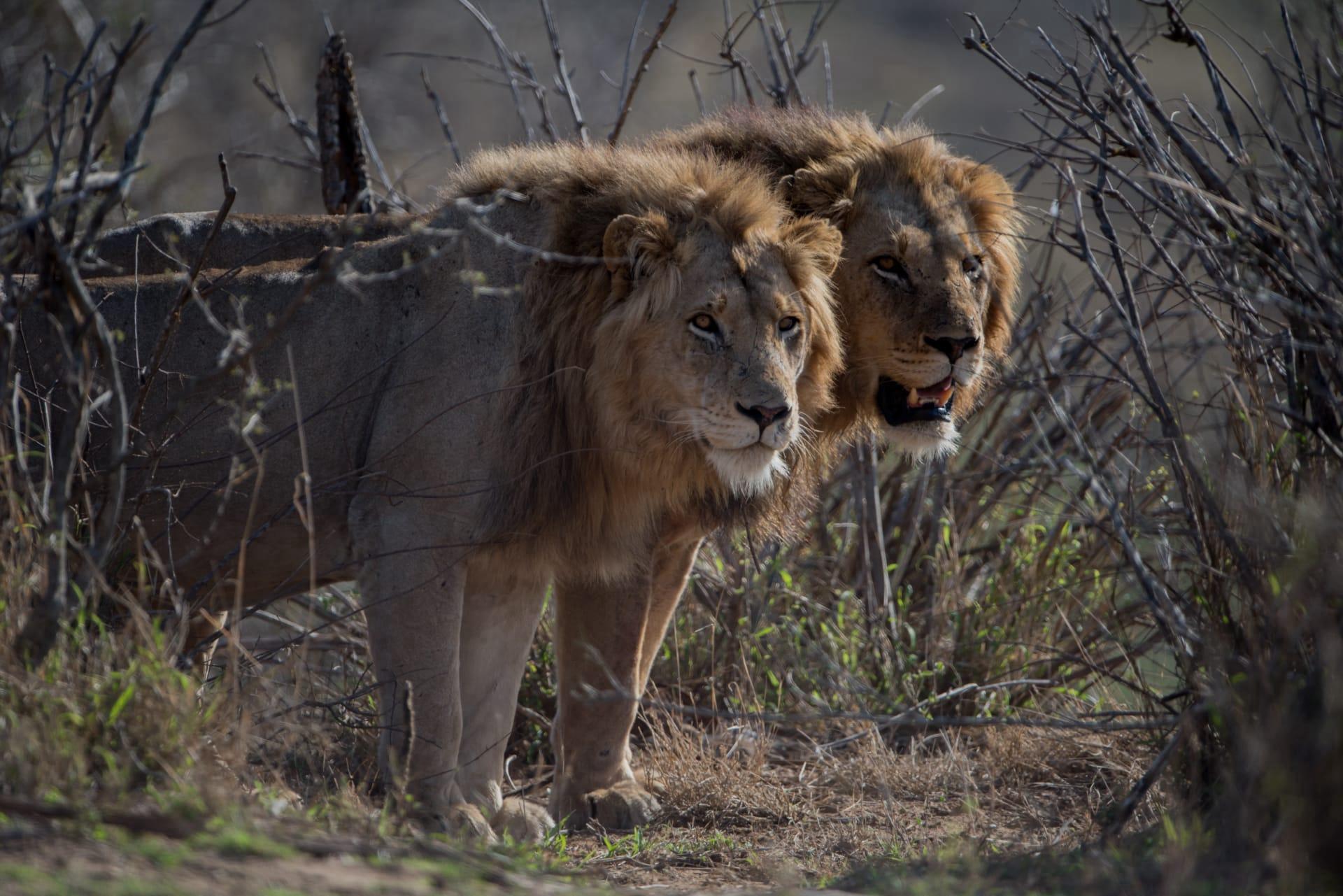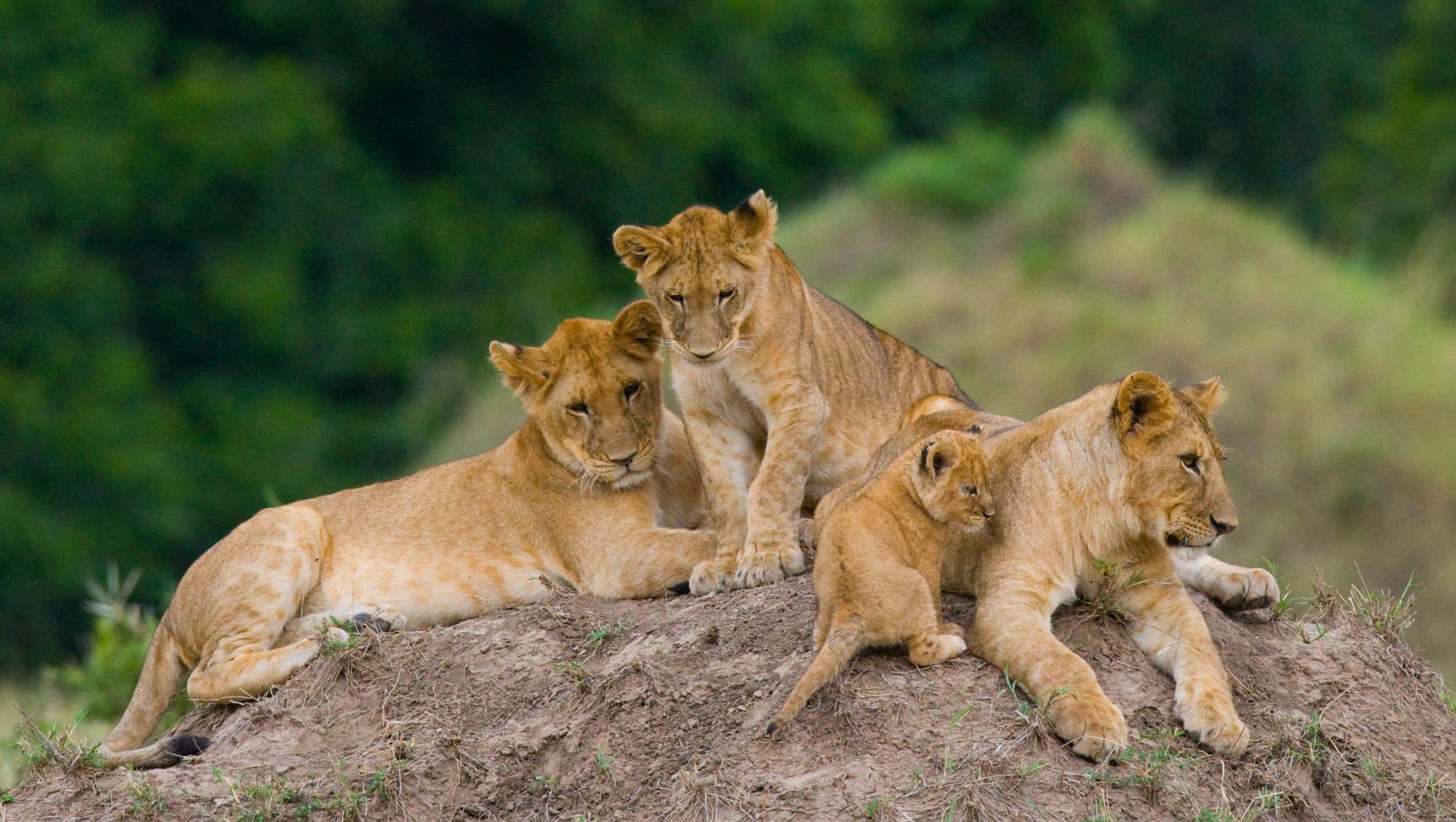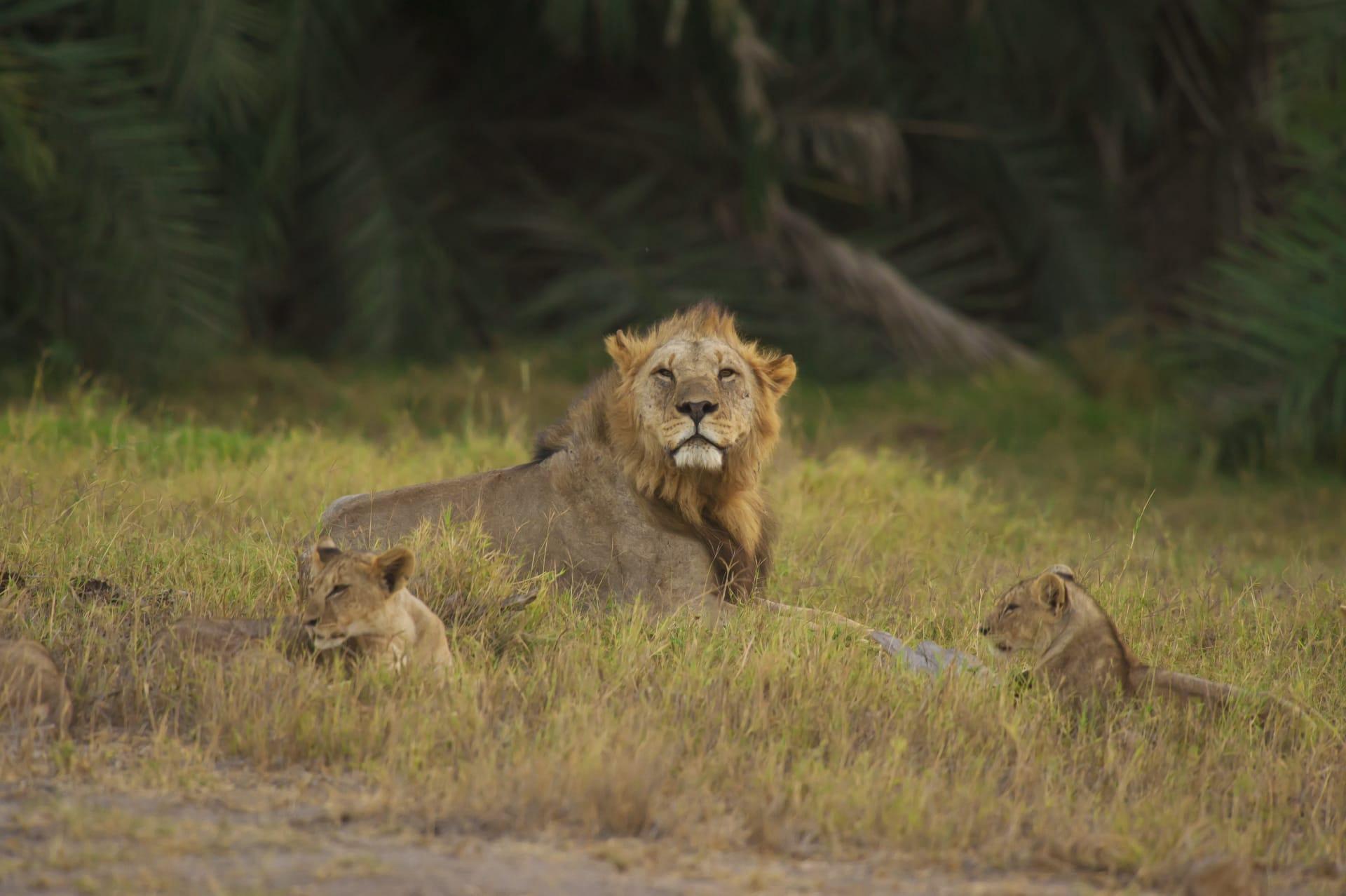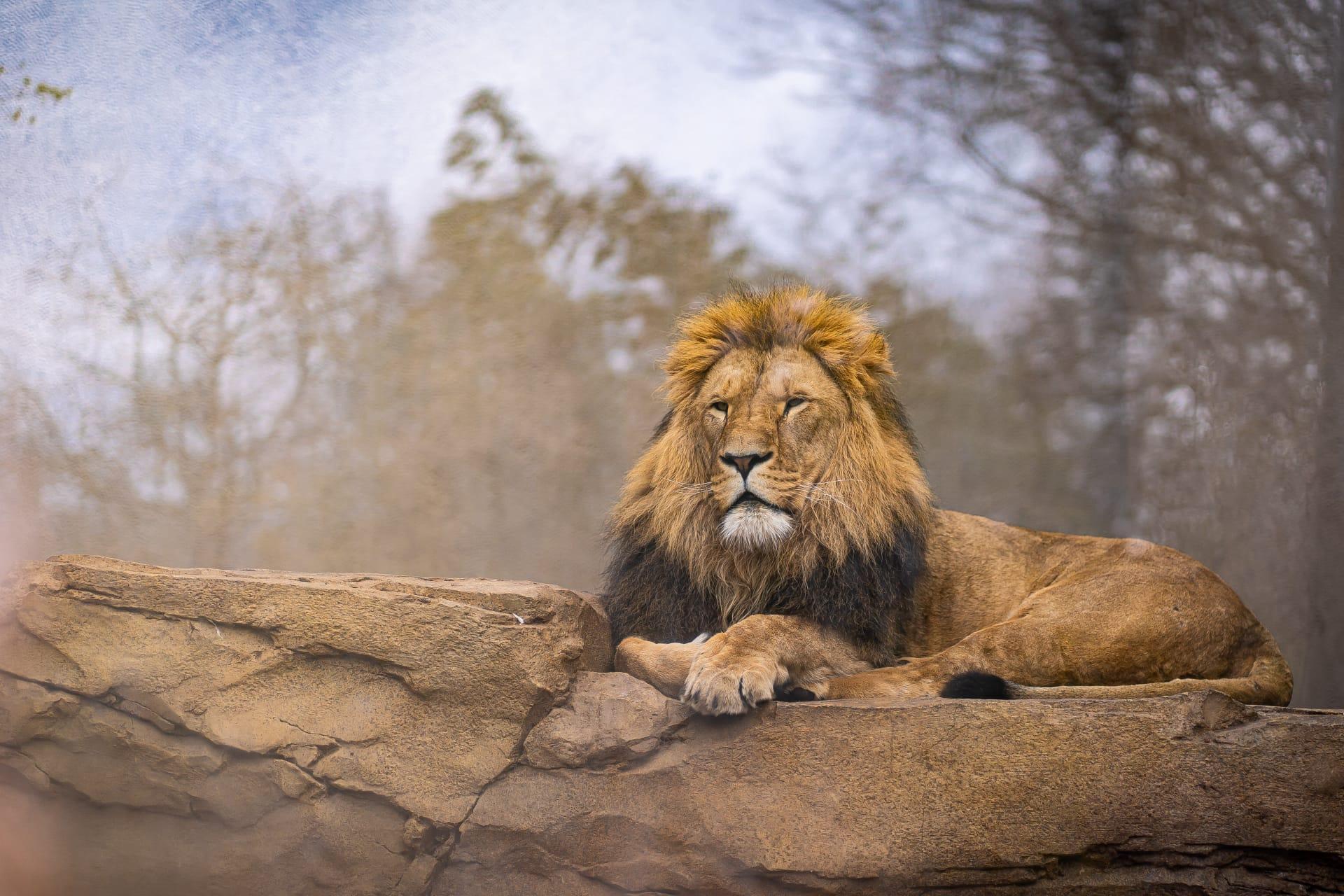1
Lions are known as the 'kings of the jungle,' but they actually live in grasslands and savannas, not jungles. This majestic animal prefers open woodlands and grasslands where they can hunt and roam freely. In these environments, lions can reach speeds of up to 50 miles per hour in short bursts, demonstrating their incredible power and agility.
Lion's roars can be heard from up to 5 miles away, making it one of the loudest roars among big cats. This powerful vocalization serves as a means of communication, helping lions to mark their territory and signal their presence to other members of the pride. The roar is so loud due to the unique structure of their vocal cords, which are square-shaped and can stretch more than other big cats, creating a deeper and louder sound.

2
Female lions do the majority of the hunting for their pride, working in groups to outsmart and capture their prey. They primarily hunt at night, utilizing their excellent night vision which is six times better than a human's. These nocturnal hunts take advantage of their prey's limited visibility, showcasing the lionesses' strategic and cooperative hunting skills.
A lion's mane is not just for show; it serves an important purpose in the wild. The darker and fuller the mane, the more intimidating the lion appears to potential rivals. Studies have shown that lions with darker manes tend to be older, stronger, and more attractive to lionesses. This mane also provides protection during fights, cushioning the head and neck areas against injuries.

3
Lions have a unique way of communicating with each other. They use a range of vocalizations, from roars to grunts, and even facial expressions. Tail flicking, for instance, is not just a random movement but a way to signal their mood or intentions. A calm, slowly moving tail indicates a relaxed state, while a twitching or rapidly moving tail can signal agitation or aggression.
Unlike other big cats, lions are incredibly social animals. They live in groups called prides, which can consist of up to 30 lions. These prides are usually made up of related females, their offspring, and a small number of males. This social structure is unique among big cats and plays a crucial role in their survival, offering protection and cooperative hunting and rearing of cubs.

4
Lions have a unique adaptation in their tongues - they are covered with tiny, hook-like structures. These papillae are incredibly tough and help lions to strip the flesh off bones, ensuring they can consume as much meat as possible from their prey. This feature also aids in grooming, helping to remove dirt and parasites from their fur.
While lions are apex predators, they are not averse to scavenging when the opportunity arises. In fact, up to 50% of their diet can come from scavenging. They often take over kills made by other predators such as cheetahs, leopards, and hyenas. This opportunistic feeding strategy helps them conserve energy and ensures a more consistent food supply.

5
Lions are the only big cats that have a tufted tail. The tail serves several purposes: it helps with balance during high-speed chases, communicates social signals, and the tuft at the end is thought to be a form of tactile communication during social interactions, especially in low light conditions.
Despite their formidable reputation, lions sleep for about 20 hours a day. This might seem excessive, but it's crucial for conserving energy. Lions expend a significant amount of energy during hunts, which are often unsuccessful. This long rest period helps them recover and maintain the strength needed for their active and demanding lifestyle.